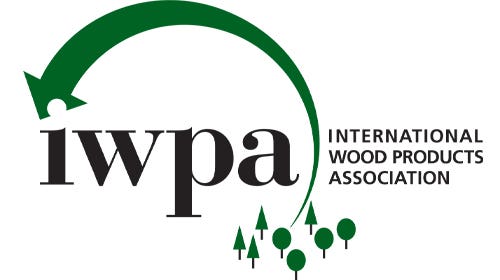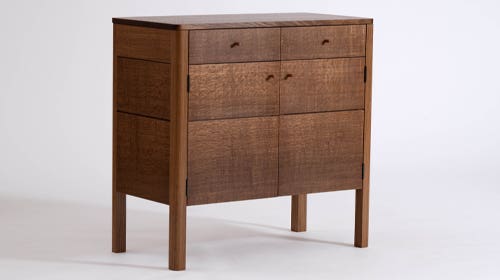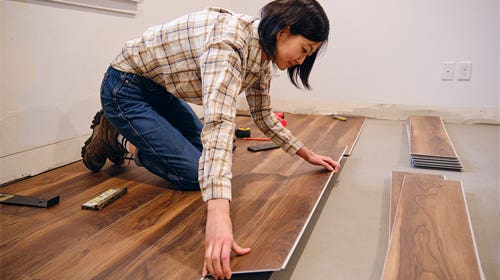Cherry prices drop slightly; quality up
Cherry remains one of the few bright spots in the wood markets with wholesale and retail dealers reporting steady sales, an improvement in overall quality, and a modest drop in…
Cherry remains one of the few bright spots in the wood markets with wholesale and retail dealers reporting steady sales, an improvement in overall quality, and a modest drop in pricing. Because of a decline in the export market, primarily to Europe, log quantities have increased, which has resulted in the availability of better quality lumber.
“We do know the quality of cherry is up because it is now a buyer’s market, and people are just not willing to settle for the really sappy cherry,” says Louis Irion of Irion Lumber, a retail and wholesale dealer in Wellsboro, Pa. “We see that the specs are tightening in the production end, and they are producing a better product, and they also have much better logs to saw from. Those middle [quality] logs when cherry was really hot were really saw logs and being exported to Europe. But that market has slackened a lot, so they are sawing them domestically and that makes a huge difference.
“There just aren’t many woods like it when you come right down to it,” adds Irion. “It has a beautiful color, you don’t need any stain on it, and it is a lighter wood if you don’t want the darkness of the mahoganies and the walnut. When you look in that category, there aren’t a lot of substitutes.”
Black cherry (Prunus serotina) also is known as wild cherry, wild black cherry, choke cherry, cabinet cherry and rum cherry, and grows throughout the Eastern U.S. with its highest concentration in Pennsylvania. Pennsylvania supplies about 70 percent of the country’s cherry, although it only represents 3 to 4 percent of the Appalachian forest. Black cherry trees reach heights between 80' and 100' with diameters of 2'-3'. The sapwood is narrow and is a white to reddish-brown color. The heartwood is pinkish-brown to reddish-brown with a distinctive golden luster.
Cherry is used extensively for fine furniture, cabinetry, architectural millwork and flooring. Burls and crotches go directly to the veneer market.
“We sell a lot of cherry,” says Steve Wall of Wall Lumber Co., a retailer and wholesaler in Mayodan, N.C. “I’ve had orders, quite a bit recently, for some larger cherry jobs. Right now we’re working on an interesting job for a house in Key West [Fla.] where they requested 16' long, no sap, plank floors for their great room. You want to talk about fun; coming up with something like that. We’re getting some pretty decent widths, but we had to pay a fortune for it.”
But Wall, who has been in business more than 27 years, also is experiencing the downside of the market, which has been impacted by the severe decline in housing starts.
“We were doing several beach houses for a builder who was building about 12 houses a year that were million-dollar homes and this year he is building one. We were doing flooring for those people, but now we’re seeing strength more in the remodeling. Instead of building a new house, they’ll build a new kitchen.”
Cherry is sensitive to ultraviolet light and changes to a reddish-brown, mahogany color upon exposure. Its working properties are excellent. Cherry works well with hand and power tools, polishes to an excellent finish, and is dimensionally stable. The wood is straight-grained and is easily machined. It saws cleanly, turns well and planes excellently. Cherry holds screws and nails well, and glues well.
“We’ve shifted our focus a bit to include [cherry] flooring; we have to change with the market,” says Jan Nielsen, owner of West Wind Hardwoods in Sidney, British Columbia. “This year there seems to be more interest. I think it has to do because the price has declined. It’s made it a little more affordable for people to get a hold of. I would still consider the [overall] demand for cherry to be high. It’s definitely a sought-after wood for woodworking here on the West Coast. They’re using it for furniture, kitchen cabinets and flooring. We’ve had a lot of success with flooring, particularly lower grades.”
Dealers, such as Wall, who ship large quantities of lumber on a daily basis, are concerned about the rising costs of fuel and transportation. In many cases, he says it now costs as much for the freight as it does for the lumber, and people get a mental block about that. If fuel costs continue to increase, dealers may have to result to some type of percentage surcharge.
“I’m really nervous when this fuel deal really trickles down to the loggers and sawmills,” Wall says. “It hasn’t got through the system yet. There’s a few months lag on really getting to influence the price, but once it comes back around, I don’t know.”
Retail prices for 100 bf of kiln-dried, 4/4 FAS black cherry, surfaced on two sides, ranged from $5.10 to $6.40/bf in the Northeast; $4.90 to $5.70/bf in the Southeast; $5.50 to $6.35/bf in the Midwest; and $7.20 to $8.45/bf in the West.
Wholesale prices for 1,000 bf of kiln-dried 4/4 FAS black cherry ranged from $4,500 to $5,350/mbf in the Northeast; $4,700 to $5,500/mbf in the Southeast; $4,750 to $5,400/mbf in the Midwest; and $6,650 to $7,100/mbf in the West.







